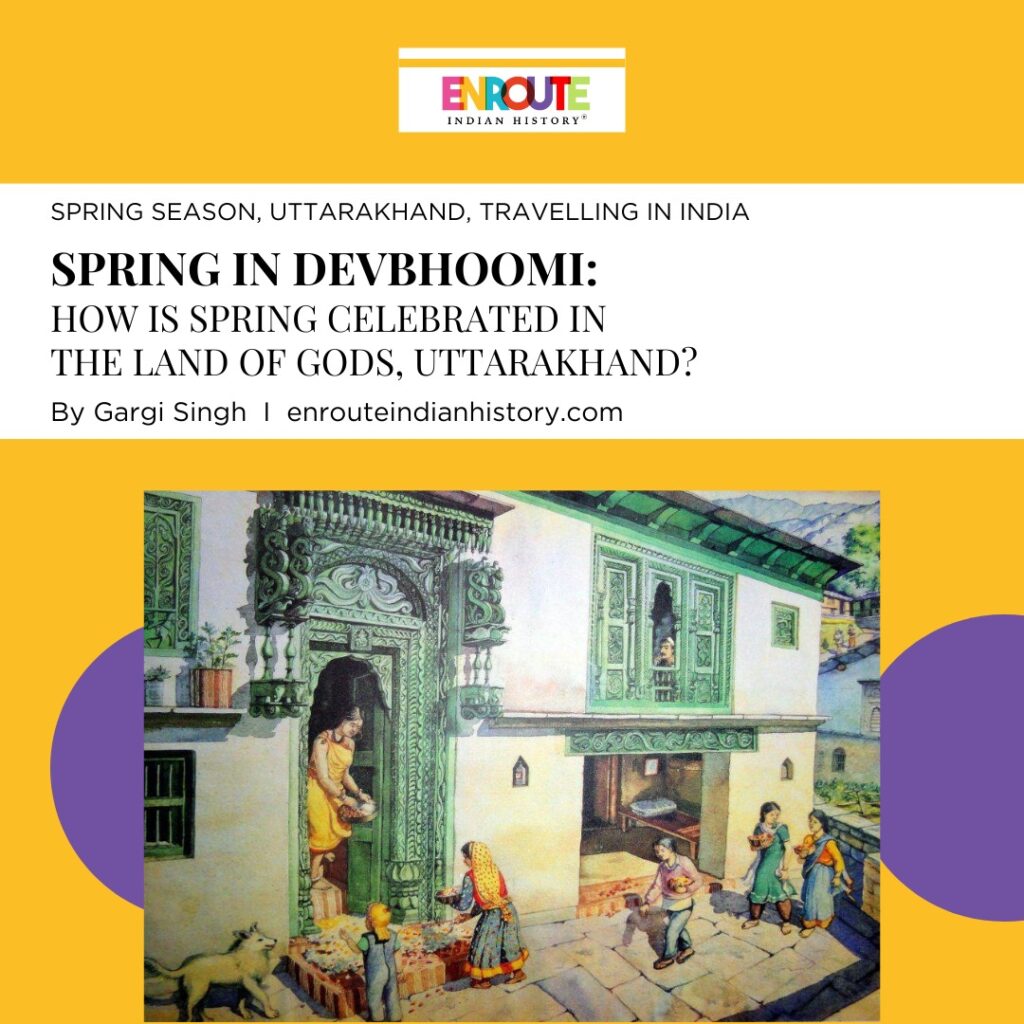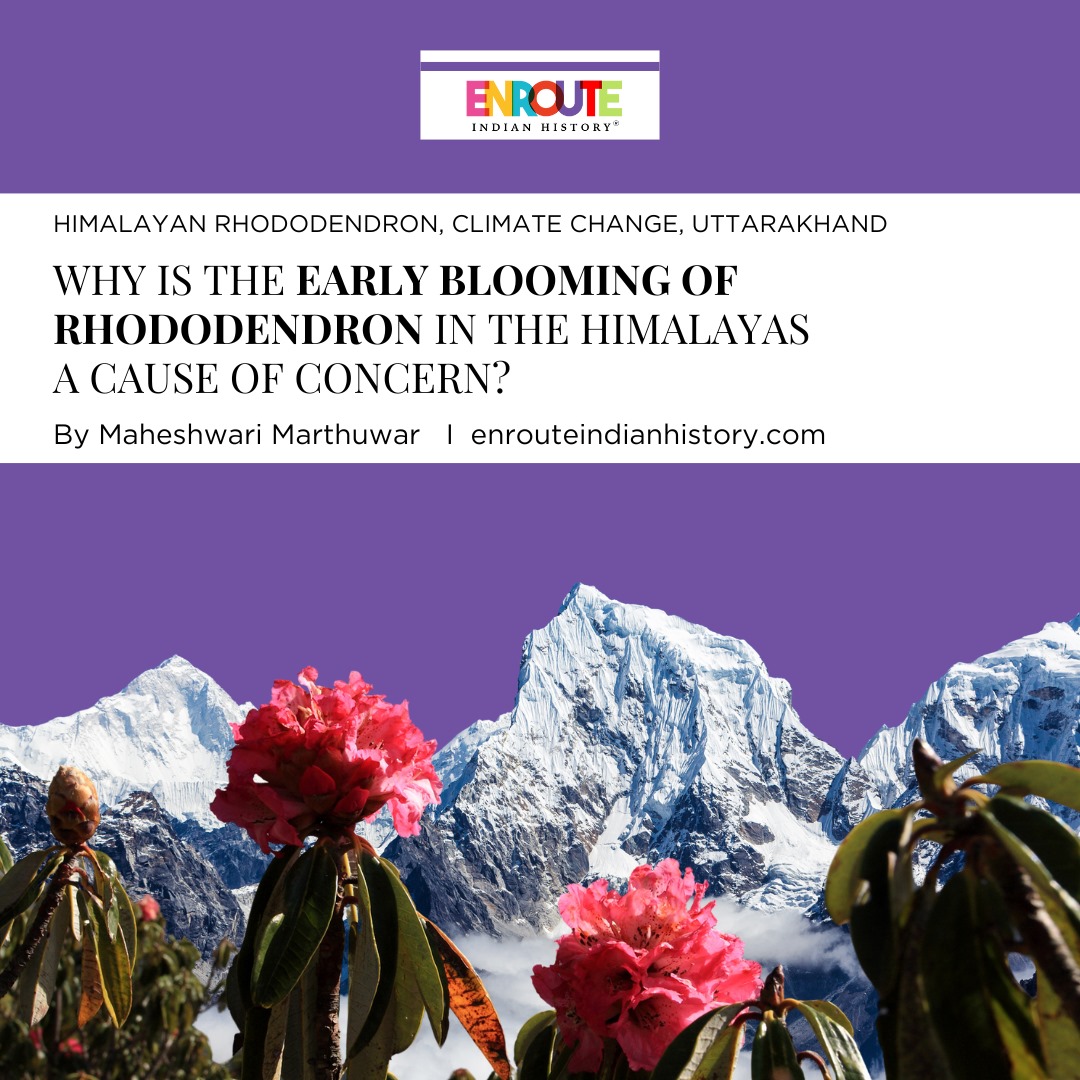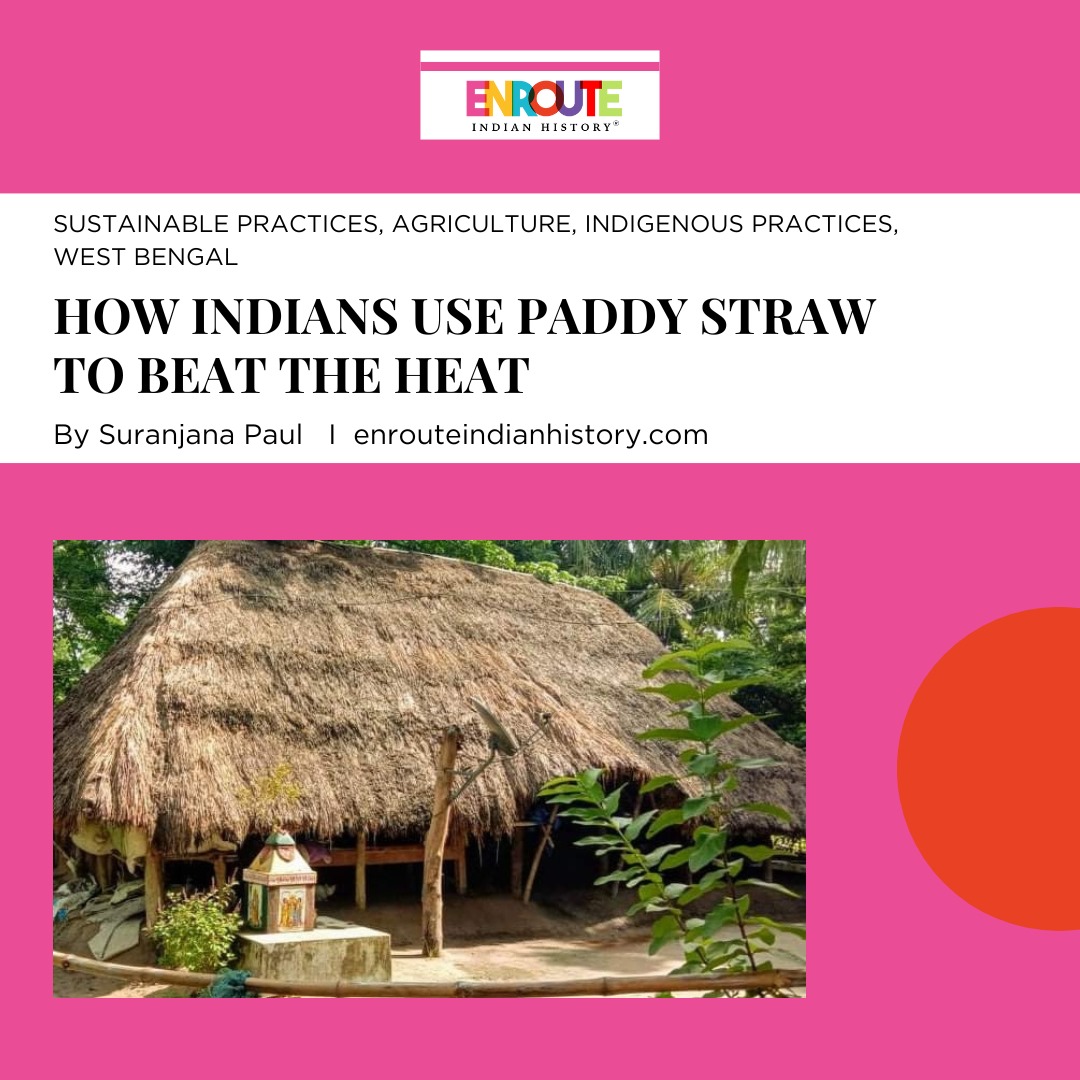Spring in Devbhoomi: How is spring celebrated in the Land of Gods, Uttarakhand?
- enrouteI
- April 3, 2024

How is spring celebrated in the Land of Gods, Uttarakhand?
Amidst the majestic Himalayas, Uttarakhand, often referred to as Devbhoomi or the Land of Gods, is not just known for its breathtaking landscapes but also for its rich cultural heritage. As winter wanes away, Uttarakhand welcomes spring with open arms, celebrating the season’s arrival with a unique blend of traditions, festivals, and folklore. Among the various springtime festivities in Uttarakhand, Phool Dei stands out as a vibrant and joyful celebration, accompanied by the blossoming of the Burans flower or the Red Rhododendron and the melodious tunes of spring folk songs.

(Image Description: A valley of flowers in the Himalayan Ranges
Source: The Valley of Flowers, Uttarakhand Tourism)
Phool Dei: Spring Festival of Uttarakhand
Little girls and boys dressed in traditional ethnic clothing, carrying baskets of newly blossomed flowers in the spring season of Uttarakhand to celebrate the harvest festival which marks the beginning of the Hindu month of Chaitra. Phool Dei translates into “Flower Giving”. This festival is celebrated with young girls and boys, also called Phoolyari, who travel across their village with plates and baskets full of green leaves and flowers. These little basket-bearers then go on drop flowers on everyone’s doorsteps singing “Phool Dei, Chamma Dei, Deno Dwar, Bhur Bhakar, Vo Dei Sei Namashkar, Puje Dwar” (May the doorstep in the houses on which the flowers have been showered, be prosperous, wealthy, and free from any conflict. May the grain storage always be filled with gains and bow namaskar to this doorstep again and again.) in the Kumaon region while folk songs are sung in the Garhwal region.

(Image Description: The different types of flowers that are dropped on people’s doorstep during Phool Dei.
Source: Vijay Laxmi Pancholi, via Pinterest)
These young girls and boys, and especially the young girls, are said to bring forth prosperity and happiness in the homes of people hence, the people of the village usually anticipate their arrival and hand over money, jaggery, rice, coconut, and sweets to these kids on their arrival. The little kids then go on to eat dishes made of these ingredients in their own homes.
In specifically the Garhwal region, the flowers chosen for Phool Dei are preferred to be those which are untouched by bees to enhance the sanctity of the practice and also to not snatch the nectar-filled flowers from the bees to maintain the morality associated with the divine.
This festival hints at the intricate relationship that the society of Uttarakhand has with its natural surroundings. Not only the usual reverence to the divine for a good harvest but also a sense of appreciation of the surrounding environment blossoming with flowers after a cold winter season that usually harshens the daily lives of the inhabitants is reflected in this festival of Phool Dei.
The society of Uttarakhand is a close-knit one. In a scarcely populated, roughly grounded, and highly interdependent social setup, everything is celebrated as a commune. Hence, festivals like Phool Dei hint at the community’s sense of shared belongingness towards a common and shared culture. Community living becomes an essential part of life and culture plays a huge role in doing so.

(Image Description: Little girls dressed in ethnic wear celebrating Phool Dei
Source: @Shriguru Pawanji via X)
Burans: Nature’s Emblem of Spring
The Red Rhododendron, also called Burans is a beautiful dark red flower that grows on the Rhododendron Arboreum tree, which is also the state tree of Uttarakhand. This flower is bestowed with medicinal and edible properties which makes it even more beneficial. The flower is highly referred to in Uttarakhandi folklore and folksongs. The flower blossoms in the spring season itself in the Himalayan ranges. The flowers are used by local people in various ways. A drink is made of flowers, which taste bitter-sweet but have excellent cooling properties. The drink, commonly referred to as Burans ka Ras or Burans sharbat, is the best cooling drink in the hot summers and it has also been observed to be good for the heart. In a recent study by a group of biologists from IIT Mandi, it was observed that the Burans Tree could be used as a potential remedy to the SARS-COV2 infected cells, due to the tree’s products’ anti-viral properties. Tasty pakoras are also made of petals and not just for human beings, but for honeybees too, the flower has an ample amount of pollen to attract them. The local people are of the view that conserving the Burans tree can help fight global warming. The flower has a religious significance too. The flowers are considered auspicious to be offered to gods. When in full bloom, the red flowers create a hallucination of a forest fire, for this very reason, they are sometimes referred to as the flames of the forest.

(Image Description: A Burans flower blooming in the spring on its tree.
Source: @khoossiee via Pinterest)
Spring Folklore & Folksongs: Echoes of Uttarakhandi Tradition
In the folklore and folksongs of Uttarakhand, spring emerges as a time of enchantment and renewal, woven intricately with the fabric of everyday life. Tales passed down through generations speak of nature and human awakening during this season, with blooming forests and perennial rivers flowing with renewed vigor. Through these age-old tales, the people of Uttarakhand find solace in the cyclical nature of existence, finding meaning in the promise of growth and abundance that spring brings.
Many such folklore tales lie behind the celebration of Phool Dei in Uttarakhand. One version of the tale begins with a king and queen who are parents to a beautiful and nature-loving princess, who is lost in the forest during the spring season. Her whereabouts are informed to the king via his dream wherein the Kuldevi or the mother goddesses, tell him that his daughter is safe with her, and she shall return her to them. On such joyous news, the king orders his subjects to pay reverence to the mother goddess by offering Burans and Phyoli flowers to the goddess’s temple and later onto people’s homes to nurture prosperity and abundance. Another folklore surrounding spring is of a nature-loving girl who is distanced from her natural surroundings due to marriage with the king, but the separation is unbearable to her, due to which she becomes ill and eventually dies. When buried in her homeland, a beautiful yellow flower blooms out of her grave. The flower blooms in the spring season and is named after her, Phyoli.
Majorly in most Uttarakhandi folklore, women, and nature are shown in great accordance. Emphasizing on the fertile, innocent, and auspicious imagery connected with young females plus a naturalistic society, such references, and connections form greater relatability with the local masses.
The folksongs, like the song Phulari marking the Phool Dei festival, or the song Bedu Paku Baramasa celebrating the spring season, speak about the natural beauty, serenity, and peace in the lives of those living in the Himalayan ranges. However, there is always a sense of sadness and pain in these songs for those who had left the mountains in search of better life opportunities.
With the migratory movement of people of Uttarakhand away from their homelands, there is a marked decline in awareness and consequently, celebration of local culture and festivals. Several renowned singers of Uttarakhand like Mr. Narendra Singh Negi have managed to gauge this feeling of separation and alienation in their Garhwali and Kumaoni songs.
In the embrace of the Himalayas, amidst the lush green valleys and snow-capped peaks, springtime in Uttarakhand is not just a season but a celebration of life itself—a reminder of the enduring bond between nature and humanity, and the timeless rhythms of renewal and regeneration that govern the universe. As the sun rises higher in the sky and the earth awakens from its winter slumber, let us join hands and hearts in honoring the spirit of spring in Devbhoomi, the Land of Gods.

(Image Description: Phool Dei festival being celebrated in a traditional Uttarakhandi House
Source: The Uttarakhand.in)
References
Chauhan, P. (2016, May 29). Phooldei Festival of Uttarakhand- A colourful festival of Flowers. Retrieved from E-Uttarakhand: https://www.euttarakhand.com/phooldei-festival-of-uttarakhand
Gusain, A. (2023, October 31). The Colorful joy of Phool Dei. Retrieved from Medium: https://medium.com/@anantgusain625/the-colorful-joy-of-phool-dei-38d58556e992
India, T. M. (n.d.). Phool Dei Festival Uttarakhand. Retrieved from Tour My India: https://www.tourmyindia.com/states/uttarakhand/phool-dei-festival.html
Jain, A. (2020, March 15). Uttarakhand’s traditional Phool Dei festival heralds onset of spring. Retrieved from Times of India: https://timesofindia.indiatimes.com/city/dehradun/uttarakhands-traditional-phool-dei-festival-heralds-onset-of-spring/articleshow/74631730.cms
Team, D. W. (2023, March 15). Know history behind Uttarakhand’s spring festival Phool Dei: Why is it celebrated, dates and more. Retrieved from DNA India: https://www.dnaindia.com/lifestyle/report-know-history-behind-uttarakhand-s-spring-festival-phool-dei-why-is-it-celebrated-dates-and-more-3030125
Tourism, U. (2024). Uttarakhand Tourism: Voices and Culture. Retrieved from Uttarakhand Tourism : https://uttarakhandtourism.gov.in/voices-and-culture
Uttarakhand, T. (2024, March 0). Phool Dei Festival Uttarakhand. Retrieved from The Uttarakhand: https://theuttarakhand.in/phool-dei-festival-uttarakhand/#:~:text=The%20origins%20of%20the%20Phool%20Dei%20Festival%20can,its%20bounties%2C%20and%20the%20need%20to%20conserve%20it.
Uttarakhandi. (n.d.). Buransh. Retrieved from Uttarakhandi: https://www.uttarakhandi.com/buransh/
- May 15, 2024
- 6 Min Read

























